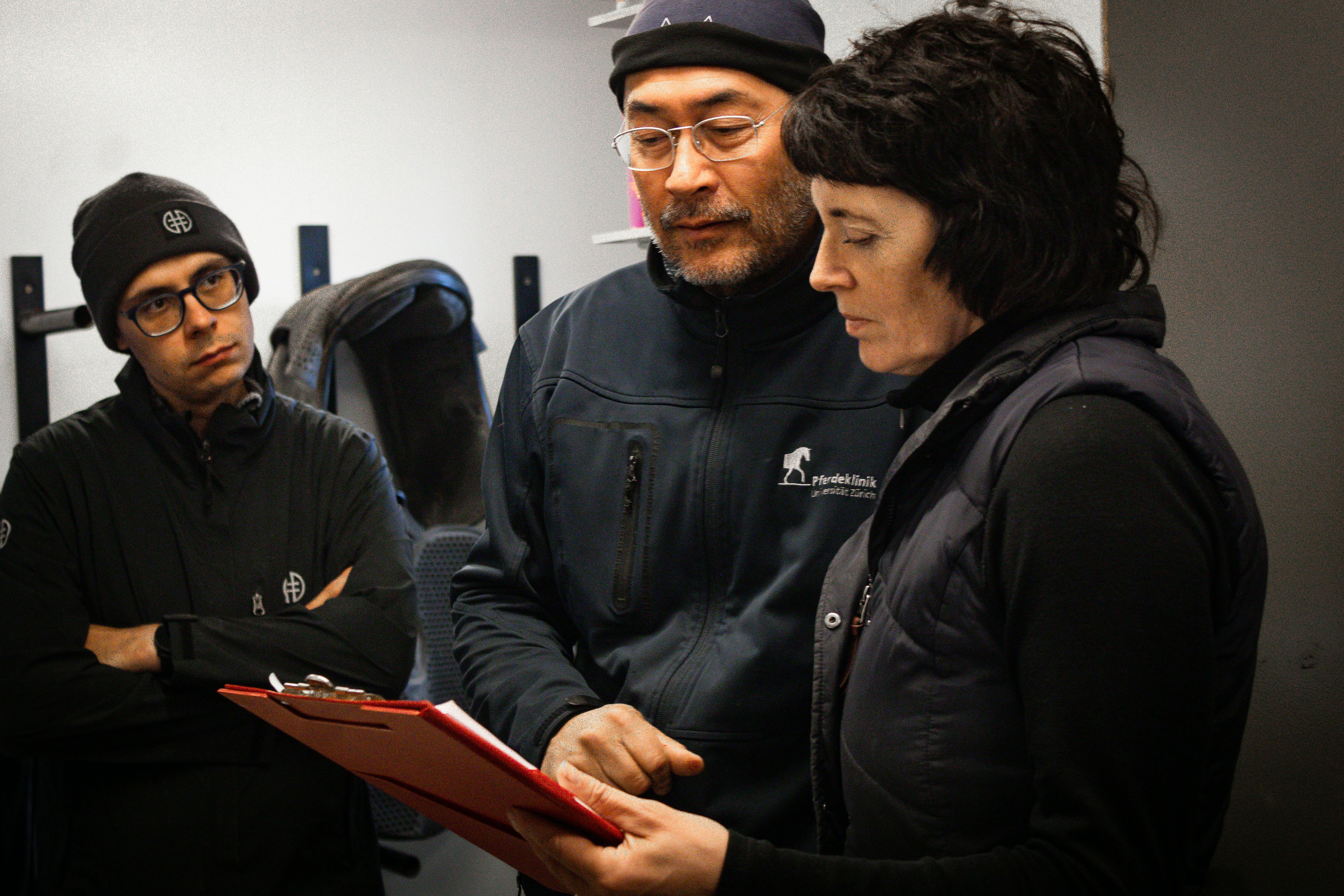Sep 16, 2024
Study: Recovery time of Icelandic horses after a 250m pace race
Researchers are studying how quickly horses’ heart rate and blood lactate levels return to normal after a 250m pace run.

The researchers behind the study pose for a photo with students and a rider for a group photo. - Photo: Berglind Margo Þorvaldsdóttir
Understanding exercise recovery in horses is crucial to riders and trainers and can improve performance and wellbeing.
A few weeks ago, researchers from the University of Zurich and Hólar University
Following a preliminary study in Brunnadern, Switzerland, in October 2023, Assoc. Prof. Guðrún Stefánsdóttir and Prof. Michael Weishaupt spent a week in Iceland, measuring 26 horses at Hólar, Hella, and Reykjavík.
The research team also included the veterinarians Gestur Júlíusson and Þóra Höskuldsdóttir, from Dýraspítalinn Lögmannshl�íð in Akureyri, Professor Sveinn Ragnarsson from Hólar University, and three Hólar University students: Master student Johannes Amplatz, and two Bachelor students who helped with data collection, giving them the opportunity to analyze the data for their B.Sc. theses. The Icelandic national team leader, Sigurbjörn Bárðarson, played a crucial role in recruiting riders and some of the fastest competition pace horses to participate in the research — even counting a former world record holder in the 250 m pace race discipline.
Two particularly interesting aspects of this study are that the horses' speeds were recorded, and plasma was deep frozen after lactate measurements were completed. This will allow the researchers to examine the correlation between speed and recovery and potentially explore other data from plasma analysis in future scientific papers.
But why is this research important?
Like humans, horses' heart rates and blood lactate concentrations increase with exercise intensity and duration. The effects of effort on the body can partially be assessed by measuring these two parameters post-exercise. We know that pushing to very high heart rates or to the point of muscle fatigue can lead to discomfort. We also know that, with training, we can raise the threshold at which this discomfort begins.
A quick reduction in heart rate after exertion indicates that the type of effort was well-matched to the body's recovery capacity. As mentioned above, this threshold can be improved with training and therefore varies between individuals.
During physical activity, muscles use energy in the form of ATP (adenosine triphosphate). Cells produce ATP by breaking down mainly carbohydrates, either with oxygen (aerobically) or without oxygen (anaerobically). When exercise intensity is maximal and ATP needs to be restored very fast, the body uses anaerobic fast-twitching muscle fibres, producing lactate as a byproduct. Lactate is recycled continuously mainly in the liver, but at a certain level of effort—typically when the heart rate approaches maximum levels and oxygen intake peaks—muscles start producing lactate faster than the body can clear it. This is important because high lactate levels increase muscle acidity, which diminishes the efficiency of energy breakdown and makes it harder to sustain effort. Human athletes often describe it as a muscle burn, tingling, or weakness.
Just as heart rate recovery can be trained, the point at which lactate buildup occurs can be improved through specific endurance training. However, lactate concentration usually takes longer to return to resting levels than heart rate.
This study is essential for understanding how much effort horses exert during a 250-meter pace run and how we can optimize their recovery and well-being. The results will likely have welfare implications, as FEIF
We look forward to seeing the study's results and learning how to best support horses in their recovery after a pace run, whether on the competition track or during a trail ride along a beautiful straight and even-grounded path in the countryside.
Below are a few photos taken during the last day of the study in Reykjavík.


Feb 24, 2025
Horses of Iceland at Equitana

Feb 24, 2025
Meet the Icelandic Horse at the Viking Masters Final in Münster!

Jan 27, 2025